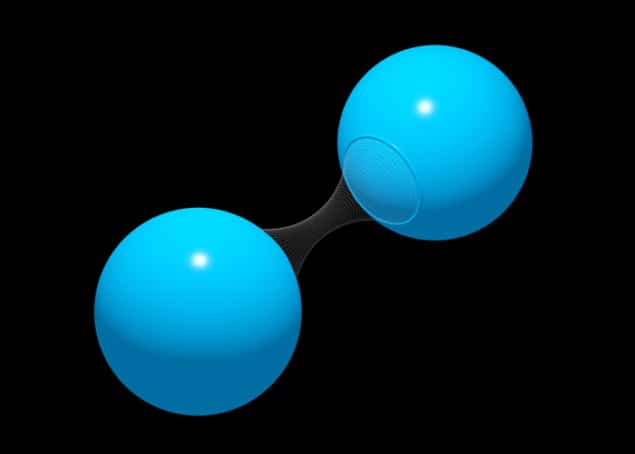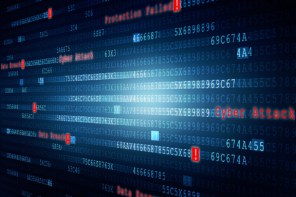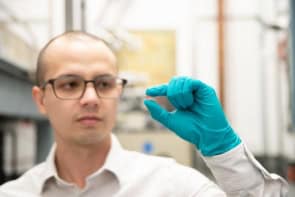
For years, physicists have debated how to quantify the entanglement of identical particles. Now, two theorists in Italy have shown that this can be done using the formalism usually applied to non-identical particles, so long as the particles are considered together as an indivisible whole. They say their work could improve quantum-information processing, where the entanglement of identical particles is essential.
Entanglement is a purely quantum-mechanical process that allows two or more particles to have a much closer relationship than is allowed by classical physics, such that measuring the quantum state of one of them will instantaneously fix that of the other, no matter how far apart they are.
To the max
For example, if one particle is revealed to have its intrinsic angular momentum (spin) pointing up, then the other will automatically have its spin pointing down, and vice versa. The two particles are said to be “maximally entangled” when, over the course of repeated measurements, the states spin-up/spin-down and spin-down/spin-up along any axis are observed with the same frequency. If either combination appears more often than the other, then the entanglement is less than one.
To work out the amount of entanglement in any particular quantum system, physicists calculate the quantum-mechanical analogue of classical entropy known as Von Neumann entropy. To date, however, this approach has been limited to what are known as non-identical or distinguishable particles. Any two particles are non-identical if they are of two different types, such as an electron and a proton, or they are of the same type but are far enough apart in space that their quantum wavefunctions do not overlap.
In contrast, physicists have been unable to agree on a way of quantifying entanglement between identical particles. In this case, the particles are close enough that their wavefunctions overlap, and it is impossible to say whether the outcomes of two successive measurements relate to a specific particle or not. In other words, the inherent quantum correlations between the two particles muddy the waters when it comes to establishing the amount of entanglement between them. According to Rosario Lo Franco of the University of Palermo, attempts to quantify entanglement between identical particles “remain technically awkward and not intuitive” and, he says, do not always generate the same result.
Two become one
In the latest work, Lo Franco and Palermo-colleague Giuseppe Compagno have shown that it is possible to use the Von Neumann formalism, even in the case of identical particles. To do so they avoid, as Compagno puts it, “artificially assigning unphysical labels”, such as “1” and “2” or “A” and “B”, to two identical particles. Instead, they consider the two particles as a single entity described by a wavefunction expressed in terms of physical quantities of a single particle.
By doing this, the researchers were able to quantify the effect of particle type and particle separation on entanglement. They found that two particles with opposite spin and partially overlapping wavefunctions are more entangled when they are closer together, and they also found that the amount of entanglement depends on whether the particles are bosons (having integer spin) or fermions (which have half-integer spin). But they found that two particles with opposite spin will be fully entangled when they are located at the same point in space (within the limits of Heisenberg’s uncertainty principle), regardless of particle type.
Efficient entanglement
These characteristics, say the researchers, allow the creation of what they call “entangling gates”, in which particles with opposite spin become more entangled as they are brought closer together and become fully entangled when they occupy the same site. Indeed, the researchers point out that such a device was demonstrated last year by physicists at the University of Colorado in the US, who showed that two rubidium atoms placed in opposite spin states became fully entangled when brought together using optical tweezers.
Lo Franco and Compagno also found that identical particles will always be at least as entangled as non-identical ones placed in the same quantum state. “This suggests that identical particles may be more efficient than distinguishable ones for entanglement-based quantum-information tasks,” says Lo Franco.
Nathan Killoran of the University of Ulm in Germany believes that the new research helps to support the idea that entanglement between identical particles is not merely a mathematical artefact, as some physicists have argued. He also thinks it could help scientists to “tap the large stores of entanglement” contained within identical particles for use in applications such as state teleportation, quantum metrology and quantum cryptography. “Entanglement can be thought of as a ‘fuel’ for many quantum-information technologies,” he says.
The research is published in Nature Scientific Reports.



